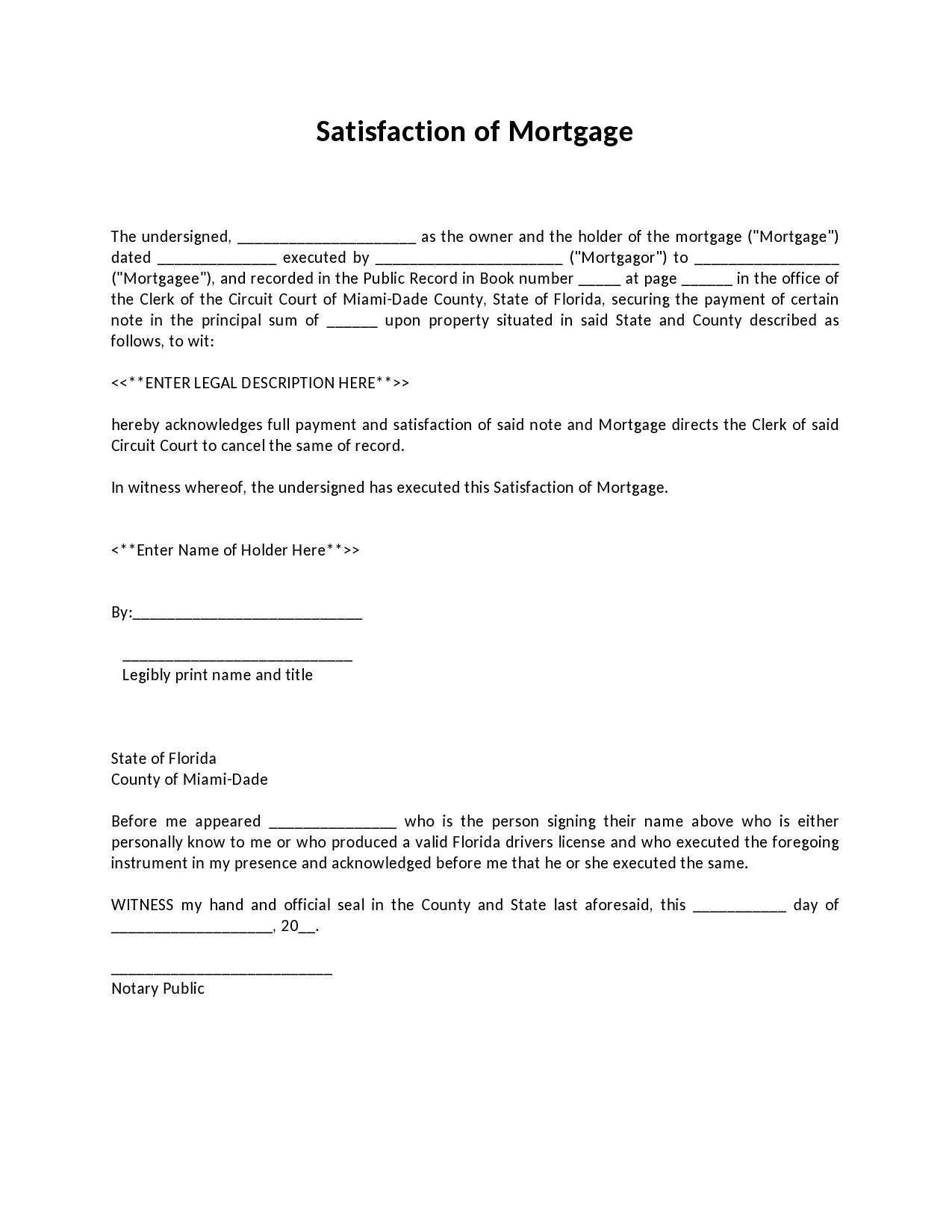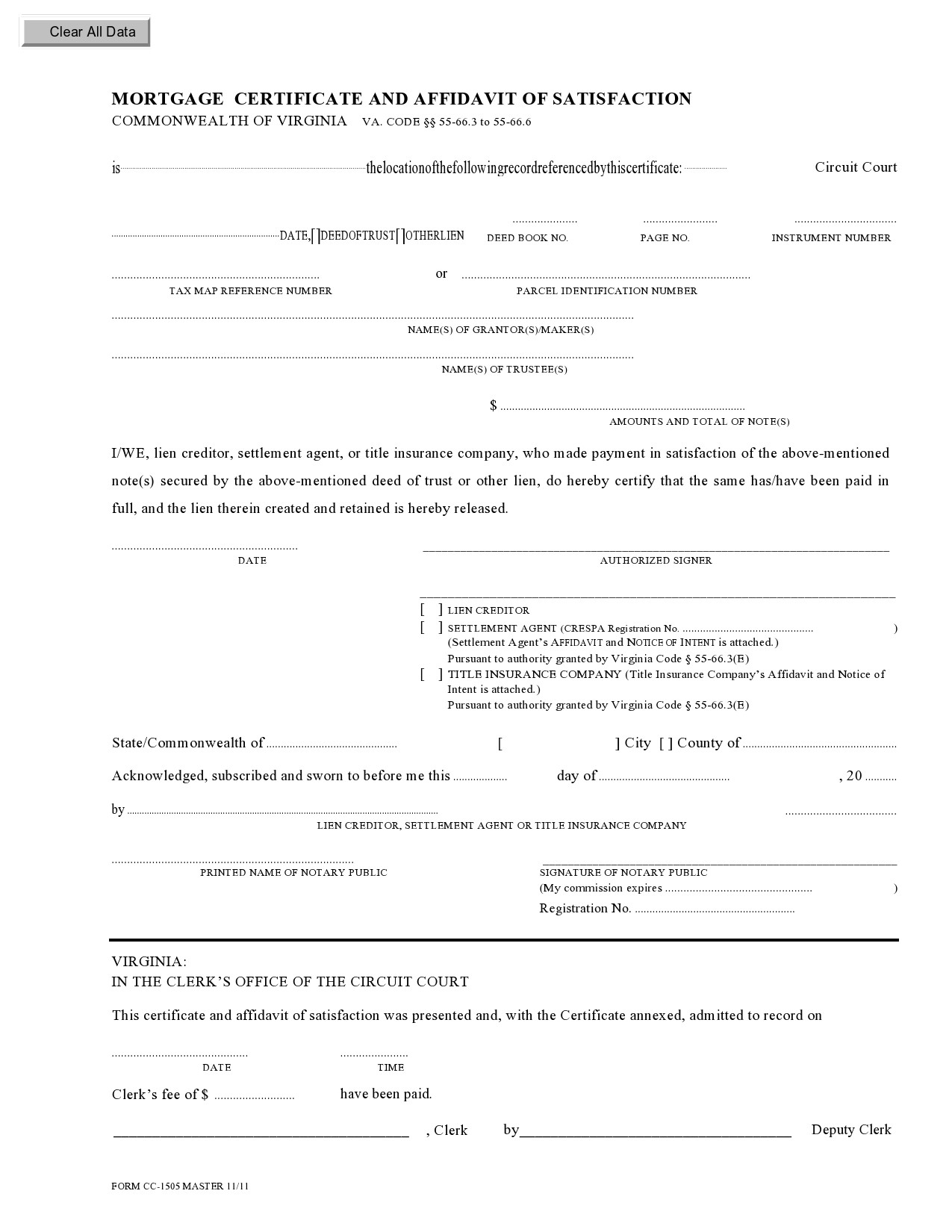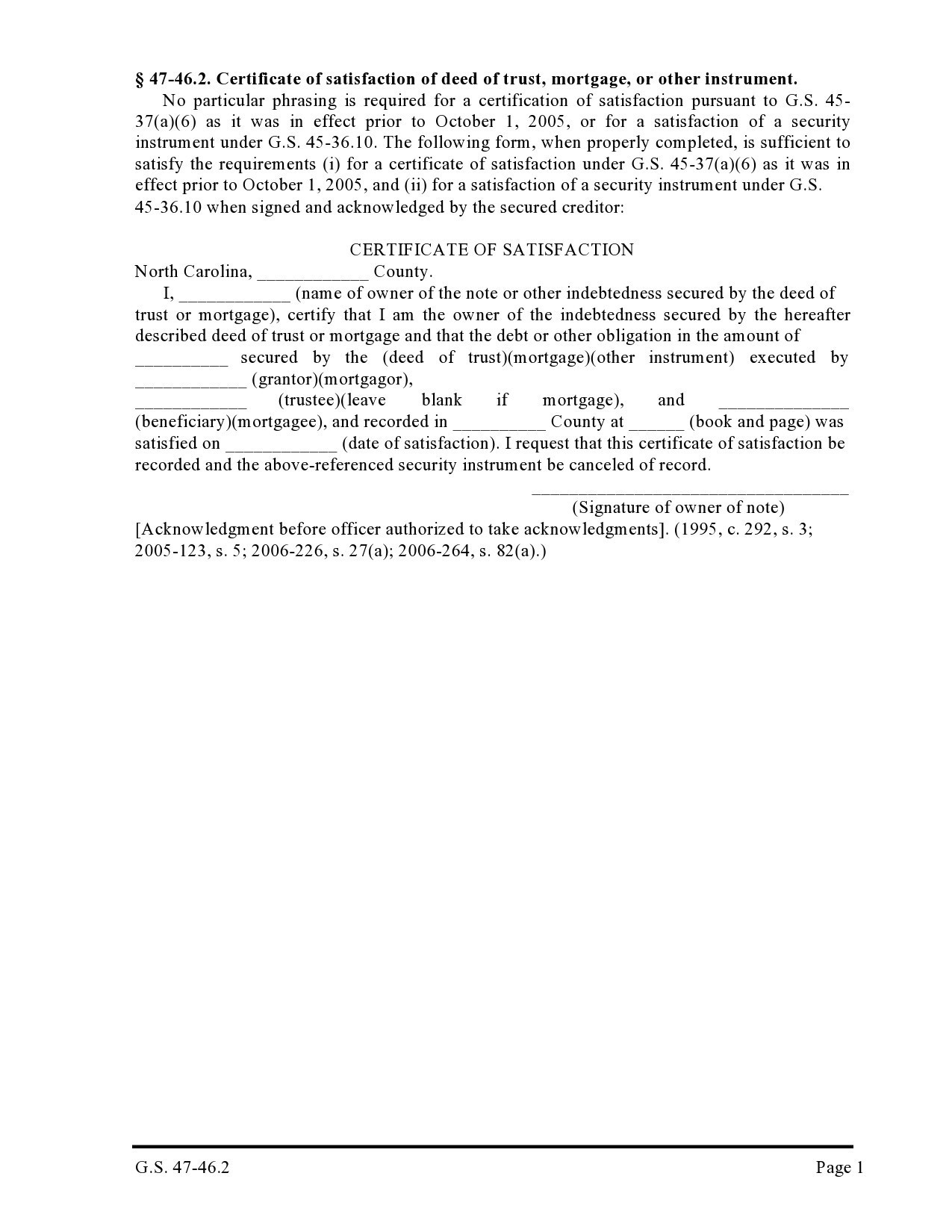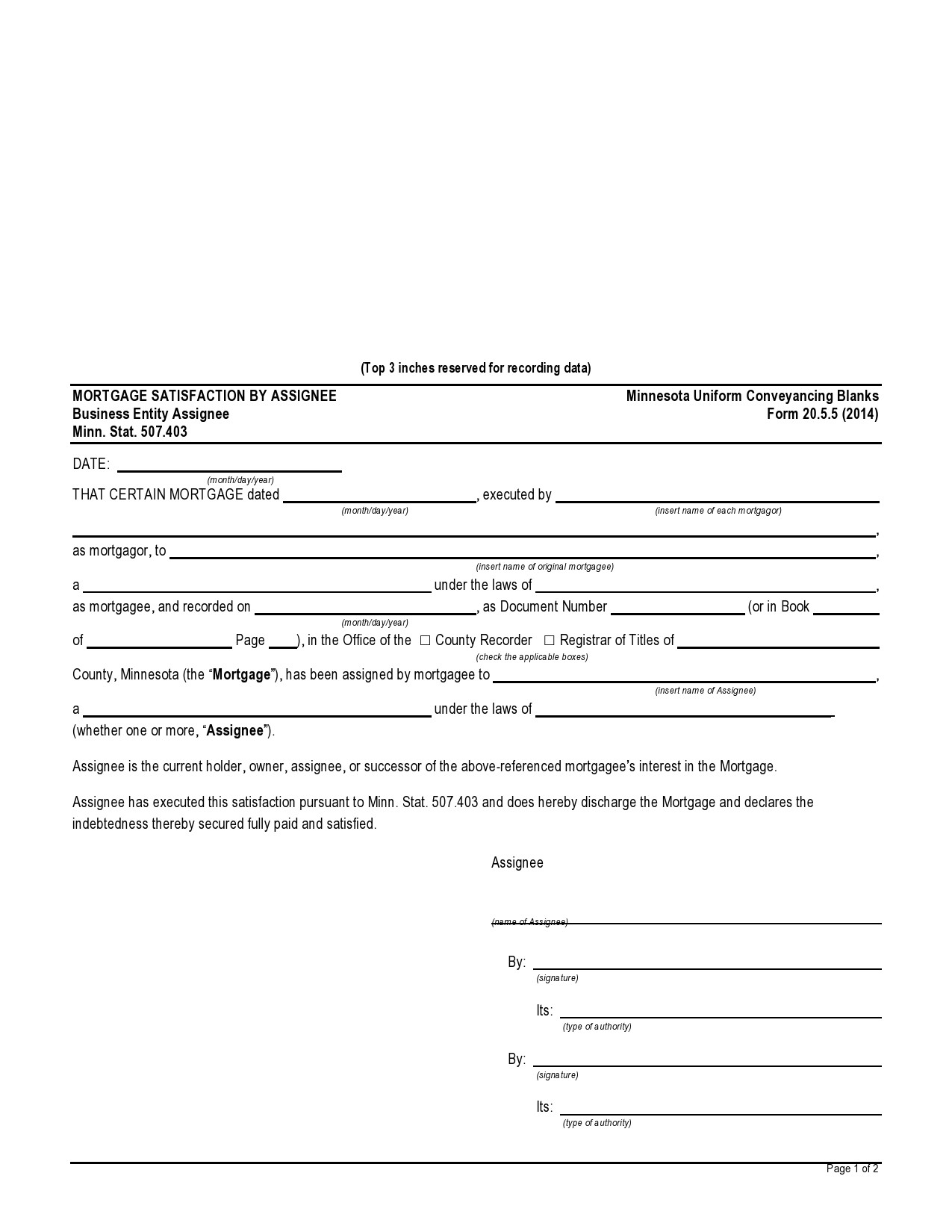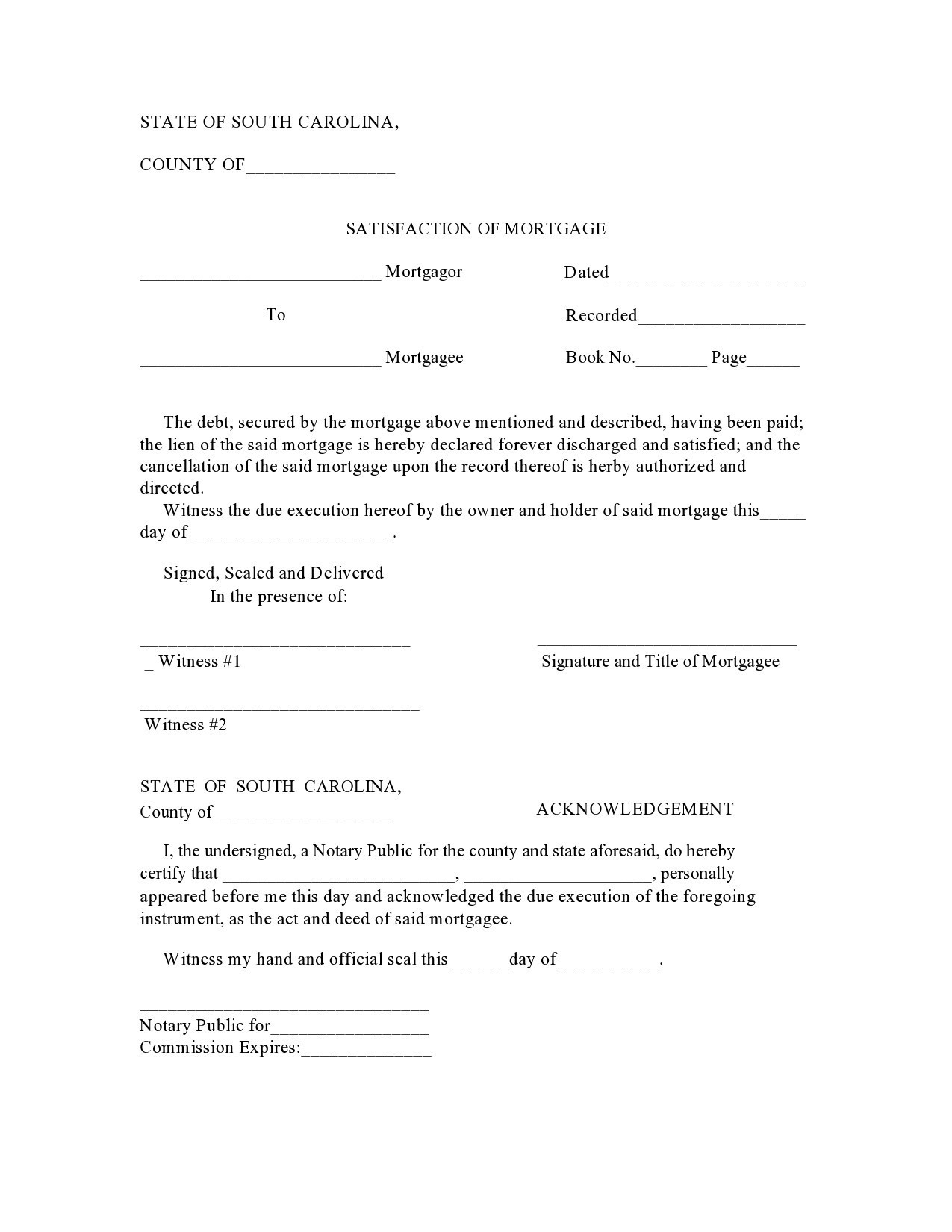One of the most exciting and anticipated events in a family’s life is to have their mortgage paid in full. At such time, you can say that you own the house and are no longer obligated to make any more payments. When this happens, you will receive a satisfaction of mortgage document confirming that the mortgage isn’t a lien on the property anymore.
Table of Contents
Satisfactions Of Mortgage
What is mortgage release satisfaction and discharge?
The satisfaction of mortgage is a document that acknowledges that you as a borrower has satisfied the terms of your mortgage agreement. This means that you have repaid your mortgage loan to the lender.
As a consequence, the lien on your property, which you have placed as security for the loan, will finally get lifted as soon as you file the mortgage satisfaction form. The lender issues this document after they receive the last mortgage payment from you.
The document bears the signature of the lender then it’s notarized by a notary public. In some counties and states, the signing may require the presence of a witness too. As soon as the document gets notarized, it can get delivered to you.
You should then file the release of mortgage form with the County Clerk’s Office as an acknowledgment that the mortgage isn’t a lien on the property anymore.
Mortgage Satisfaction Forms
Is satisfaction of mortgage the same as a deed?
Depending on where you reside, you would have signed a deed or a mortgage when you take out a loan to buy a house. For the latter, you need that document first long before you get your satisfaction of mortgage. There is a difference between a mortgage and a loan, and how they’re related to the process of foreclosure.
Mortgage
- This is the term most commonly used when referring to a home loan. Surprisingly, a mortgage isn’t just a loan. Instead, it’s an agreement between you as the buyer and a lender that creates a lien on the house you plan to buy.
- There are some states that use similar documents for transactions involving loans.
- Mortgage transfers between banks and other entities is a very common practice. This transfer of a mortgage from one party to another requires proper documentation which is usually recorded in the county records. The document used in mortgage transfers is an “assignment of mortgage.”
- A mortgage gives the owner of the loan the right to sell the property through the foreclosure process in case you cannot make the payments or you breach the loan agreement.
- The judicial foreclosure process goes through the system of the state court. This is common in states where mortgages are instruments of security. But in some states like Michigan and Alabama, foreclosures are generally non-judicial. This means that in these states, the terms of the mortgage contracts, allow lenders to conduct non-judicial mortgage foreclosures.
Deeds
A deed of trust also pledges real property to obtain a loan. You would use this document rather than a mortgage in some states. The deed of trust involves the following:
- The trustor (you as the borrower)
- The lender (or the beneficiary)
- The trustee (an independent third-part that holds the legal title of the property)
Similar to a mortgage, the deed of trust can also get transferred from one party to another. These transfers are typically recorded in the county records. The transfer of deeds of trusts and mortgages are more commonly called “assignments.”
Non-judicial foreclosures are also common in states that use deeds of trust. If the document includes a power of sale clause, then the lender can foreclose the property without going to court.
You can find the procedural requirements for non-judicial foreclosures in the laws of your state. The process involved in non-judicial foreclosures is much faster than judicial foreclosures. You can determine whether you need to use a deed of trust or a mortgage to get your loan by:
- Looking at all of the documents you get after closing escrow on your property.
- Asking your loan servicer.
- Going to the land records office in your locale then looking for the recorded document. Sometimes, you can also find these records online.
Mortgage Lien Release Letters
How can I get mortgage satisfaction?
After satisfying the terms of your loan, the lender will issue a satisfaction of mortgage, which releases the lien on your home. If you made your mortgage through a financial institution like a bank, the mortgage lien release letter is usually sent to you automatically.
If you took a mortgage with a private party, it is more likely that you will accomplish the satisfaction of loan document yourself. Once the document has the signatures of yourself and the lender then you have it notarized, you can now file it with the County Recorder or Recorder of Deeds.
Even if you have paid your mortgage in full, you won’t get your deed until you file this document properly. It is important that you promptly act on this because some counties set a time limit on filing this document after satisfying the mortgage.
If you file late, you might have to pay legal fees. Once you have filed this document, the deed to your property must get transferred to you within a couple of weeks. Expect to receive a copy of the deed that names you as the owner of the house.
Release Of Mortgage Forms
FAQs about the satisfaction of mortgage
The satisfaction of mortgage is a document signed by a mortgagee that acknowledges that a mortgage has already been fully paid and that the mortgage isn’t a lien on the house anymore. To clear the title to the property, you must record the mortgage satisfaction form with the County Recorder or Recorder of Deeds.
If you don’t record the satisfaction of mortgage document within the given time limit, you will hold the responsibility for any damages set out by statute. To understand the letter of satisfaction, here are some FAQs about it:
- Who is the Mortgagor?
This is the one who borrowed money to buy a property. - Who is the Mortgagee?
This is the one who lent the money to the Mortgagor. - What is a notary public?
This is a state-appointed official who has the authority to authenticate legal documents like acknowledgments, declarations, mortgages, deeds, mortgage lien release letters, and other official documents. - What is the consideration?
This refers to the actual value that a Grantor pays to a Grantee in monetary terms. If there isn’t any provision for consideration like if it comes in the form of a gift, the standard consideration that you should enter will be 10.00. - What is the County Recorder’s Office?
This office has different monikers in different states. Some common names for this office are Register of Deeds, Land Registry Office, or County’s Office. This is where documents related to real estate property get registered. - Where can I get a legal description of my property?
You can get your property’s legal description from the County Recorder’s Office. You need to present your tax parcel number or municipal address. - What is the parcel identification or tax parcel number? How do I find out the specific number of my property?
You need this number to assess values and to identify ownership of a property for the purpose of taxation. You can get this number from your Revaluation Notice, Personal Property Listing Form, or Tax Statement. - Why is there always a big margin at the top of documents related to properties?
It is a requirement of the County Recorder who will file the document, to place a 2 to 3-inch margin at the top. It is here where they will affix a stamp, a filing number, or other information to help identify and document the satisfaction of mortgage. When you get the document, you shouldn’t write anything on this space. - Can I get the document notarized in a different state than where my property is?
Most states will recognize the notarization of land transfers by officials from other states. But just to make sure, you should call the County Clerk’s Office in your locale then ask if they will permit the document to get notarized in a different state. The documents in some real estate offices allow for interstate notarization. This allows you to choose which state you will have your document notarized, regardless of where the property is. - What do I do with the document after I get the signatures of the Mortgagee and the Notary Public?
Once the document has all required signatures and it’s notarized, it should be promptly filed at the land records office in the county where your property is. As stated earlier, this office has different names including County Recorder’s Office, County Clerk’s Office, Land Registry Office, or Register of Deeds. - Should I have a witness when I affix my signature to a deed?
Except for the states of Georgia, Arkansas, Michigan, South Carolina, Vermont, and Ohio, there is no requirement for witnesses to sign deeds in order for the document to become valid. But you need to have the document notarized. In some states, however, specific counties require that the deeds need witnesses. To make sure, check with the county recorder’s office in your locale to find out if you need to have witnesses.







